#hospice
Text
America's largest hospital chain has an algorithmic death panel

It’s not that conservatives aren’t sometimes right — it’s that even when they’re right, they’re highly selective about it. Take the hoary chestnut that “incentives matter,” trotted out to deny humane benefits to poor people on the grounds that “free money” makes people “workshy.”
There’s a whole body of conservative economic orthodoxy, Public Choice Theory, that concerns itself with the motives of callow, easily corrupted regulators, legislators and civil servants, and how they might be tempted to distort markets.
But the same people who obsess over our fallible public institutions are convinced that private institutions will never yield to temptation, because the fear of competition keeps temptation at bay. It’s this belief that leads the right to embrace monopolies as “efficient”: “A company’s dominance is evidence of its quality. Customers flock to it, and competitors fail to lure them away, therefore monopolies are the public’s best friend.”
But this only makes sense if you don’t understand how monopolies can prevent competitors. Think of Uber, lighting $31b of its investors’ cash on fire, losing 41 cents on every dollar it brought in, in a bid to drive out competitors and make public transit seem like a bad investment.
Or think of Big Tech, locking up whole swathes of your life inside their silos, so that changing mobile OSes means abandoning your iMessage contacts; or changing social media platforms means abandoning your friends, or blocking Google surveillance means losing your email address, or breaking up with Amazon means losing all your ebooks and audiobooks:
https://www.eff.org/deeplinks/2021/08/facebooks-secret-war-switching-costs
Businesspeople understand the risks of competition, which is why they seek to extinguish it. The harder it is for your customers to leave — because of a lack of competitors or because of lock-in — the worse you can treat them without risking their departure. This is the core of enshittification: a company that is neither disciplined by competition nor regulation can abuse its customers and suppliers over long timescales without losing either:
https://pluralistic.net/2023/01/21/potemkin-ai/#hey-guys
It’s not that public institutions can’t betray they public interest. It’s just that public institutions can be made democratically accountable, rather than financially accountable. When a company betrays you, you can only punish it by “voting with your wallet.” In that system, the people with the fattest wallets get the most votes.
When public institutions fail you, you can vote with your ballot. Admittedly, that doesn’t always work, but one of the major predictors of whether it will work is how big and concentrated the private sector is. Regulatory capture isn’t automatic: it’s what you get when companies are bigger than governments.
If you want small governments, in other words, you need small companies. Even if you think the only role for the state is in enforcing contracts, the state needs to be more powerful than the companies issuing those contracts. The bigger the companies are, the bigger the government has to be:
https://doctorow.medium.com/regulatory-capture-59b2013e2526
Companies can suborn the government to help them abuse the public, but whether public institutions can resist them is more a matter of how powerful those companies are than how fallible a public servant is. Our plutocratic, monopolized, unequal society is the worst of both worlds. Because companies are so big, they abuse us with impunity — and they are able to suborn the state to help them do it:
https://www.cambridge.org/core/journals/perspectives-on-politics/article/testing-theories-of-american-politics-elites-interest-groups-and-average-citizens/62327F513959D0A304D4893B382B992B
This is the dimension that’s so often missing from the discussion of why Americans pay more for healthcare to get worse outcomes from health-care workers who labor under worse conditions than their cousins abroad. Yes, the government can abet this, as when it lets privatizers into the Medicare system to loot it and maim its patients:
https://prospect.org/health/2023-08-01-patient-zero-tom-scully/
But the answer to this isn’t more privatization. Remember Sarah Palin’s scare-stories about how government health care would have “death panels” where unaccountable officials decided whether your life was worth saving?
https://pubmed.ncbi.nlm.nih.gov/26195604/
The reason “death panels” resounded so thoroughly — and stuck around through the years — is that we all understand, at some deep level, that health care will always be rationed. When you show up at the Emergency Room, they have to triage you. Even if you’re in unbearable agony, you might have to wait, and wait, and wait, because other people (even people who arrive after you do) have it worse.
In America, health care is mostly rationed based on your ability to pay. Emergency room triage is one of the only truly meritocratic institutions in the American health system, where your treatment is based on urgency, not cash. Of course, you can buy your way out of that too, with concierge doctors. And the ER system itself has been infested with Private Equity parasites:
https://pluralistic.net/2022/11/17/the-doctor-will-fleece-you-now/#pe-in-full-effect
Wealth-based health-care rationing is bad enough, but when it’s combined with the public purse, a bad system becomes a nightmare. Take hospice care: private equity funds have rolled up huge numbers of hospices across the USA and turned them into rigged — and lethal — games:
https://pluralistic.net/2023/04/26/death-panels/#what-the-heck-is-going-on-with-CMS
Medicare will pay a hospice $203-$1,462 to care for a dying person, amounting to $22.4b/year in public funds transfered to the private sector. Incentives matter: the less a hospice does for their patients, the more profits they reap. And the private hospice system is administered with the lightest of touches: at the $203/day level, a private hospice has no mandatory duties to their patients.
You can set up a California hospice for the price of a $3,000 filing fee (which is mostly optional, since it’s never checked). You will have a facility inspection, but don’t worry, there’s no followup to make sure you remediate any failing elements. And no one at the Centers for Medicare & Medicaid Services tracks complaints.
So PE-owned hospices pressure largely healthy people to go into “hospice care” — from home. Then they do nothing for them, including continuing whatever medical care they were depending on. After the patient generates $32,000 in billings for the PE company, they hit the cap and are “live discharged” and must go through a bureaucratic nightmare to re-establish their Medicare eligibility, because once you go into hospice, Medicare assumes you are dying and halts your care.
PE-owned hospices bribe doctors to refer patients to them. Sometimes, these sham hospices deliberately induce overdoses in their patients in a bid to make it look like they’re actually in the business of caring for the dying. Incentives matter:
https://www.newyorker.com/magazine/2022/12/05/how-hospice-became-a-for-profit-hustle
Now, hospice care — and its relative, palliative care — is a crucial part of any humane medical system. In his essential book, Being Mortal, Atul Gawande describes how end-of-life care that centers a dying person’s priorities can make death a dignified and even satisfying process for the patient and their loved ones:
https://atulgawande.com/book/being-mortal/
But that dignity comes from a patient-centered approach, not a profit-centered one. Doctors are required to put their patients’ interests first, and while they sometimes fail at this (everyone is fallible), the professionalization of medicine, through which doctors were held to ethical standards ahead of monetary considerations, proved remarkable durable.
Partly that was because doctors generally worked for themselves — or for other doctors. In most states, it is illegal for medical practices to be owned by non-MDs, and historically, only a small fraction of doctors worked for hospitals, subject to administration by businesspeople rather than medical professionals.
But that was radically altered by the entry of private equity into the medical system, with the attending waves of consolidation that saw local hospitals merged into massive national chains, and private practices scooped up and turned into profit-maximizers, not health-maximizers:
https://prospect.org/health/2023-08-02-qa-corporate-medicine-destroys-doctors/
Today, doctors are being proletarianized, joining the ranks of nurses, physicians’ assistants and other health workers. In 2012, 60% of practices were doctor-owned and only 5.6% of docs worked for hospitals. Today, that’s up by 1,000%, with 52.1% of docs working for hospitals, mostly giant corporate chains:
https://prospect.org/health/2023-08-04-when-mds-go-union/
The paperclip-maximizing, grandparent-devouring transhuman colony organism that calls itself a Private Equity fund is endlessly inventive in finding ways to increase its profits by harming the rest of us. It’s not just hospices — it’s also palliative care.
Writing for NBC News, Gretchen Morgenson describes how HCA Healthcare — the nation’s largest hospital chain — outsourced its death panels to IBM Watson, whose algorithmic determinations override MDs’ judgment to send patients to palliative care, withdrawing their care and leaving them to die:
https://www.nbcnews.com/health/health-care/doctors-say-hca-hospitals-push-patients-hospice-care-rcna81599
Incentives matter. When HCA hospitals send patients to die somewhere else to die, it jukes their stats, reducing the average length of stay for patients, a key metric used by HCA that has the twin benefits of making the hospital seem like a place where people get well quickly, while freeing up beds for more profitable patients.
Goodhart’s Law holds that “When a measure becomes a target, it ceases to be a good measure.” Give an MBA within HCA a metric (“get patients out of bed quicker”) and they will find a way to hit that metric (“send patients off to die somewhere else, even if their doctors think they could recover”):
https://en.wikipedia.org/wiki/Goodhart%27s_law
Incentives matter! Any corporate measure immediately becomes a target. Tell Warners to decrease costs, and they will turn around and declare the writers’ strike to be a $100m “cost savings,” despite the fact that this “savings” comes from ceasing production on the shows that will bring in all of next year’s revenue:
https://deadline.com/2023/08/warner-bros-discovery-david-zaslav-gunnar-wiedenfels-strikes-1235453950/
Incentivize a company to eat its seed-corn and it will chow down.
Only one of HCA’s doctors was willing to go on record about its death panels: Ghasan Tabel of Riverside Community Hospital (motto: “Above all else, we are committed to the care and improvement of human life”). Tabel sued Riverside after the hospital retaliated against him when he refused to follow the algorithm’s orders to send his patients for palliative care.
Tabel is the only doc on record willing to discuss this, but 26 other doctors talked to Morgenson on background about the practice, asking for anonymity out of fear of retaliation from the nation’s largest hospital chain, a “Wall Street darling” with $5.6b in earnings in 2022.
HCA already has a reputation as a slaughterhouse that puts profits before patients, with “severe understaffing”:
https://www.nbcnews.com/health/health-news/workers-us-hospital-giant-hca-say-puts-profits-patient-care-rcna64122
and rotting, undermaintained facililties:
https://www.nbcnews.com/health/health-care/roaches-operating-room-hca-hospital-florida-rcna69563
But while cutting staff and leaving hospitals to crumble are inarguable malpractice, the palliative care scam is harder to pin down. By using “AI” to decide when patients are beyond help, HCA can employ empiricism-washing, declaring the matter to be the factual — and unquestionable — conclusion of a mathematical process, not mere profit-seeking:
https://pluralistic.net/2023/07/26/dictators-dilemma/ggarbage-in-garbage-out-garbage-back-in
But this empirical facewash evaporates when confronted with whistleblower accounts of hospital administrators who have no medical credentials berating doctors for a “missed hospice opportunity” when a physician opts to keep a patient under their care despite the algorithm’s determination.
This is the true “AI Safety” risk. It’s not that a chatbot will become sentient and take over the world — it’s that the original artificial lifeform, the limited liability company, will use “AI” to accelerate its murderous shell-game until we can’t spot the trick:
https://pluralistic.net/2023/06/10/in-the-dumps-2/
The risk is real. A 2020 study in the Journal of Healthcare Management concluded that the cash incentives for shipping patients to palliatve care “may induce deceiving changes in mortality reporting in several high-volume hospital diagnoses”:
https://journals.lww.com/jhmonline/Fulltext/2020/04000/The_Association_of_Increasing_Hospice_Use_With.7.aspx
Incentives matter. In a private market, it’s always more profitable to deny care than to provide it, and any metric we bolt onto that system to prevent cheating will immediately become a target. For-profit healthcare is an oxymoron, a prelude to death panels that will kill you for a nickel.
Morgenson is an incisive commentator on for-profit looting. Her recent book These Are the Plunderers: How Private Equity Runs — and Wrecks — America (co-written with Joshua Rosner) is a must-read:
https://pluralistic.net/2023/06/02/plunderers/#farben
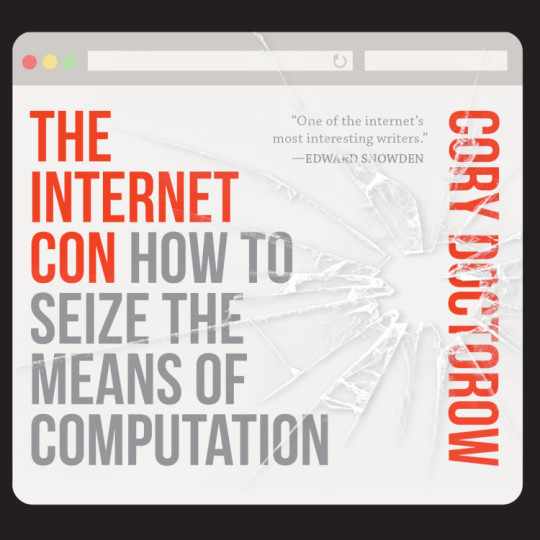
I’m kickstarting the audiobook for “The Internet Con: How To Seize the Means of Computation,” a Big Tech disassembly manual to disenshittify the web and bring back the old, good internet. It’s a DRM-free book, which means Audible won’t carry it, so this crowdfunder is essential. Back now to get the audio, Verso hardcover and ebook:
http://seizethemeansofcomputation.org

If you'd like an essay-formatted version of this thread to read or share, here's a link to it on pluralistic.net, my surveillance-free, ad-free, tracker-free blog:
https://pluralistic.net/2023/08/05/any-metric-becomes-a-target/#hca

[Image ID: An industrial meat-grinder. A sick man, propped up with pillows, is being carried up its conveyor towards its hopper. Ground meat comes out of the other end. It bears the logo of HCA healthcare. A pool of blood spreads out below it.]

Image:
Seydelmann (modified)
https://commons.wikimedia.org/wiki/File:GW300_1.jpg
CC BY 3.0
https://creativecommons.org/licenses/by-sa/3.0/deed.en
#pluralistic#hca healthcare#Gretchen Morgenson incentives matter#death panels#medicare for all#ibm watson#the algorithm#algorithmic harms#palliative care#hospice#hospice care#business#incentives matter#any metric becomes a target#goodhart's law
539 notes
·
View notes
Text


A couple of years ago I worked as a clinical psychologist in a children's hospice. This uniform is my favorite.
#at work#uniform#medicine#nurse costume#full length#me#personal#self image#my work#hospice#black dress#outfit#clinical psychology#psychologist#shrink#shape#body shape#tumblr girls#tumblr girl#girlblogging#long hair#ponytail#psychology#mental health#work place#selfie#self portrait#therapy#therapist#psychologie
118 notes
·
View notes
Text


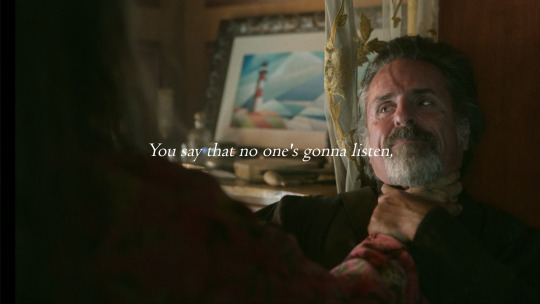

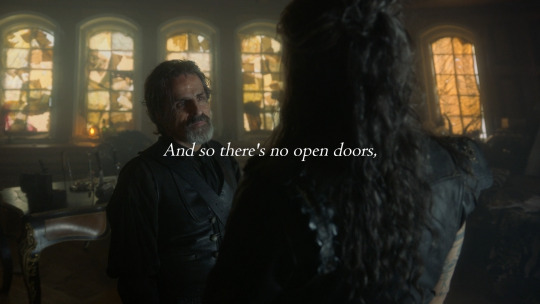


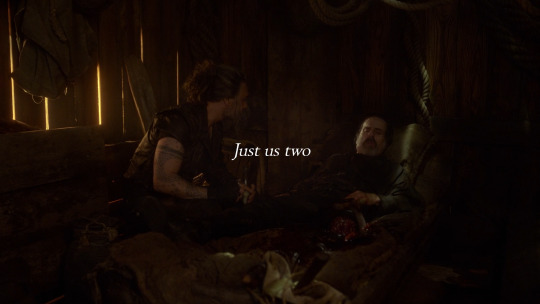
TWO - THE ANTLERS // BLACKHANDS
#appreciate the way it gets darker and darker as you scroll down#thats nothing to do with me thats just the way their scenes are lit#its thematic though#for both them in general and specifically for this post#nyxtalks#ofmd#our flag means death#ofmd s2 spoilers#izzy hands#israel hands#edward teach#blackbeard#blackhands#edizzy#hospice#the antlers#ive been calling this my ✨doing art badly✨ era. do i know what im doing? no. but i sure am doing it#i have so many opinions about edizzy + hospice. its so fucking them#i might turn this into a whole series i have so many thoughts#im just releasing this how it is because ive been essentially sitting on it for weeks now bc im fretting over little details#im thinking i should have made some colour changes to bits and i can see the s on 3 isnt as visible and and and#its my bad art era i need to stop fretting hsjdjdkdhsk#also: specific shout out to the people ive bothered about this over the last few weeks i love you i love you i love you#thank u for your input in picking images + helping me get good quality versions of the episodes <3 <3 <3 <3
101 notes
·
View notes
Text
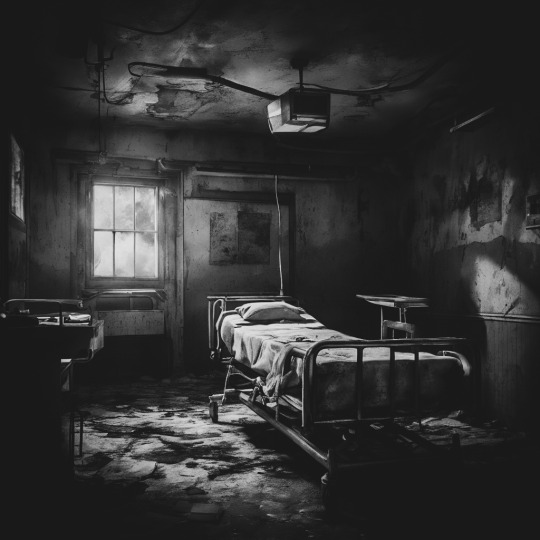

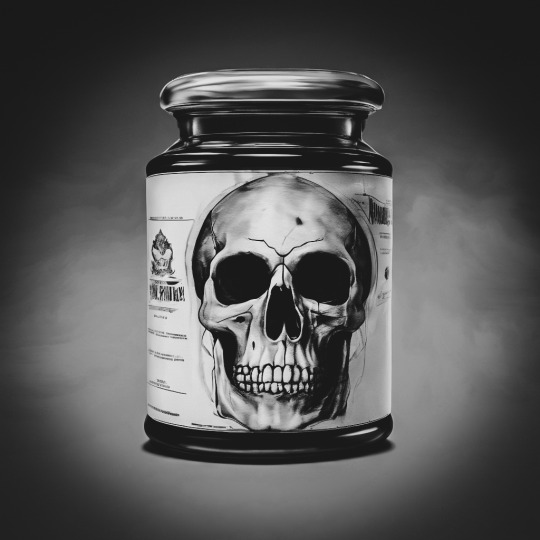
Do you have a medical appointment
#dark aesthetic#dark art#darkness#goth#goth aesthetic#gothic#goth alternative#gotica#gotico#dark core gothique#hospital#hospice#tenebriism#tenebrous#horror#abandoned
31 notes
·
View notes
Text
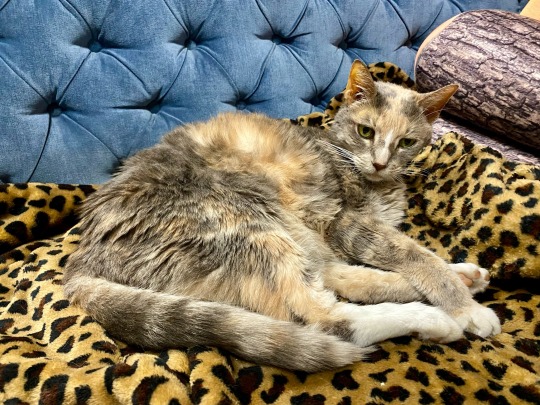

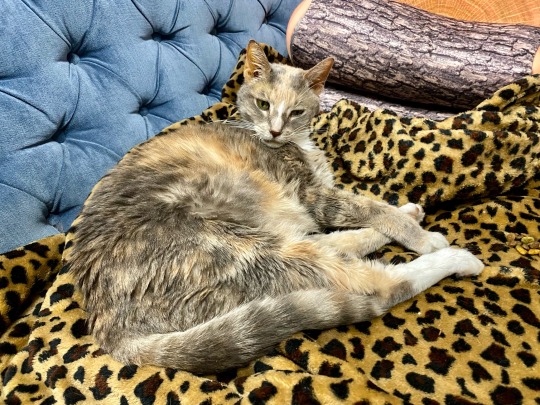
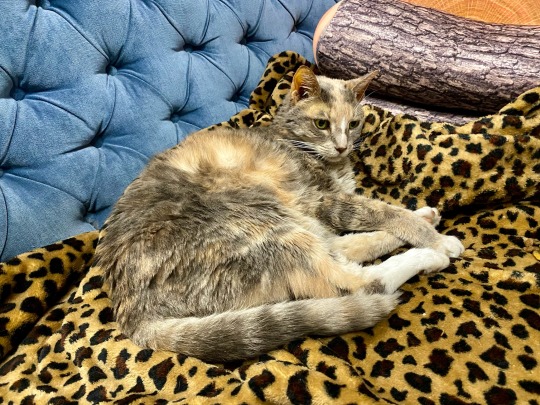
Dixie and her babies.
Our little patient, Sadie, resting on the couch.
#cute#cat family#neko#gato#fat cat#katze#Sadie#Sadie bug#the bug#old lady#Sadie is sick#inoperable tumor#jaundice#dilute tortie#dilute tortoiseshell#beautiful#beautiful cat#sweet girl#sweetest cat#skinny#old baby#mama cat’s blog#big baby#baby girl#patient#Miami cat#hospice#hospice kitty#little cat family
29 notes
·
View notes
Text
Me watching @silverstreams write the most gut wrenching fics about the haha funny portal game

#yes it’s stevie wevie#silverstreams#the long game#portal#portal 2#aperture science#hospice#AAAAAAAAAAAAAAA#my heart can’t take this silver
20 notes
·
View notes
Text
The last month has felt like a badly scripted soap opera.
1/22: Sister passed out at the store. ER found no cause.
1/23: Sister called from school bathroom floor because too dizzy to stand. She went to different ER and they determined migraine/dehydration. IV fluids helped.
1/24-1/26: Residual migraine. Missed school.
2/4: Mom got diagnosed with pneumonia. Started meds.
2/7: J called and said Mammaw's oxygen had dropped into the 70s/80s and they were starting her on supplemental oxygen. She wasn't very coherent but she was alert. The only coherent thing she said was making me and sister promise to take care of Mom. My Aunt S came down to sit with her that night. Alerted her son and the close relatives who live out of state.
2/8: Mammaw fell asleep. Could not wake up. Still breathing. Still had pulse and blood pressure. Called local family and updated our of state family. Stayed with her until 6 pm. Aunt S called at 6:30 pm and told us that Mammaw's breathing had gotten raspy. We went back. She had the death rattle. Called family again. Held Mammaw's hands and talked to her. Told her we'd be okay and it was okay.
2/9: 12:22 am. Hospice nurse called time of death. Called Mammaw's son Uncle J, cousin J, brother, dad, and other Uncle J (didn't realize we had so many J names in the family). 4:00 pm met with the funeral director to start planning. Called Y at the florist and got the casket spray and standing sprays ordered.
2/10-2/13: Helped family find hotels and plane tickets to attend funeral on 2/16.
2/14: Sister did Mammaw's makeup for the services.
2/15: We had private family viewing before services on 2/16. Had dinner with family that we hadn't seen in a while.
2/16: Visitation. Funeral (I spoke some). Graveside service. After service meal.
2/17: Had therapy at 9 am. Cried on my therapist's couch. Went to Barnes and Noble, Five Below, Bath & Body Works, and the mall as an attempt at distraction. Didn't help. Saw family before they left.
2/18: Last of family left to go home. Cried again.
2/20: Mom goes to ER with chest pain (started during funeral planning week but thought it was anxiety). Admitted to hospital with fluid on right lung (lower lobe collapsed, middle lobe collapsing).
2/22: Going to drain lung but she had too much eliquis in her system
2/23: Drained lung. Lidocaine didn't help. She felt it all. 1.4 liters of fluid pulled off. Chest X-ray showed it was almost all of the fluid and lung was reinflating.
2/24: Mom discharged from hospital.
18 notes
·
View notes
Text
Please pray for my friend Beth who has been on hospice for several months and is struggling with lots of pain. She is a Christian.
118 notes
·
View notes
Text
JSYK, the nun known as Mother Theresa was a horrible women who let people suffer and die to boost her own image. She received millions in donations but refused to upgrade her facilities. People suffering from curable illnesses were allowed to die. No doctors were on hand at her hospices, needles were reused, and the dying underwent forced baptisms. That's just the tip of the iceberg.
She ran her sect like a cult, and actually had the audacity to say: ""I think it is very beautiful for the poor to accept their lot, to share it with the passion of Christ. I think the world is being much helped by the suffering of the poor people."
She was essentially obsessed with how being around poor people made her look and barely used any of the money she received to help them. Nuns in her sect also suffered from cultish abuses. She's been treated as a saint because no one in the Catholic church looks to deep.
#mother theresa#saint theresa#ableism#abuse#disability#chronic pain#chronic illness#medical abuse#spoonies#hospice#cult
67 notes
·
View notes
Text
i generally don't post about my personal life on here, but i went to high school with ariel and watching her cystic fibrosis progress so rapidly in recent years has been devastating. she's entering hospice today and is raising money to pay for her care, as her insurance won't cover all of her medical bills and as we all know healthcare in the united states is unbelievably expensive.
please donate if you're able, and please reblog this so it can reach other people.
#cystic fibrosis#cf#medical bills#fundraiser#i dont know what fucking tags to use im just trying to get more traction#mutual aid#gofundme#donate#please donate#signal boost#boost#fundraising#fundrasier#ohio#lgbt#united states#healthcare#hospice#palliative care#hospital bills#hospital#medicine#cystic fibrosis awareness#cf awareness#money
38 notes
·
View notes
Text
Once upon a time my town had an absolutely amazing sushi restaurant called Sushi Koko. It was run by a family; the mom, K, did a lot of the cooking, her daughter C waited tables, her son T did some of the cooking, and her business partner made the sushi. K retired several years ago and sold the restaurant to a very sweet Korean couple who couldn't make good Japanese food to save their lives. It closed for good not long after.
I fell out of touch with the family for a while, but then one day while I was sitting in my allergy clinic waiting room, waiting out my mandated 60 minutes after my shots, C came in. Since then, we've connected at the allergy clinic many times because we usually go on the same day around the same time. I knew that K was dealing with some serious health issues and was on dialysis, but she seem to be holding pretty stable until November 22nd, when she fell and hit her head on concrete. She had an ambulance trip to SF General initially and then was transferred to Kaiser in South San Francisco. A few days later, she made the decision to discontinue dialysis. C said the treatment was causing pain throughout her mom's body, and she just didn't want to do it anymore.
I spent an hour or so on Friday sitting with the family. K is on hospice care: visitors allowed in any number 24 hours a day. It surprised me how much Japanese I managed to dredge up from my studies 30 years ago. Nobody would mistake me for fluent, but I can manage a simple conversation about everyday things with some recourse to English words when the Japanese term just won’t come to mind.
K remembers me as the hirame engawa person from her restaurant days. (That’s a specific type of flounder that's very uncommon and special. It’s been so long that I had completely forgotten about it and don’t even remember what it tasted like anymore. But it’s wonderful that they have those fond memories of their longtime customers and guests.)
I’m so glad that I was able to go and sit with them and visit and tell K what she has meant to me. Hoping to get back there at least once or twice more. Their plans are all up in the air; they’re going day by day since K’s condition is impossible to predict.
Never wait to tell people what they’ve meant to you. All too often, we miss the chance, and then all that’s left is regret.
22 notes
·
View notes
Text
Private equity finally delivered Sarah Palin's death panels

Tonight (Apr 26), I’ll be in Burbank, signing Red Team Blues at Dark Delicacies at 6PM.

Remember “death panels”? Sarah Palin promised us that universal healthcare was a prelude to a Stalinist nightmare in which unaccountable bureaucrats decided who lived or died based on a cost-benefit analysis of what it would cost to keep you alive versus how much your life was worth.
If you’d like an essay-formatted version of this post to read or share, here’s a link to it on pluralistic.net, my surveillance-free, ad-free, tracker-free blog:
https://pluralistic.net/2023/04/26/death-panels/#what-the-heck-is-going-on-with-CMS
Palin was right that any kind of healthcare rationing runs the risk of this kind of calculus, where we weight spending $10,000 to extend a young, healthy person’s life by 40 years against $1,000 to extend an elderly, disabled person’s life by a mere two years.
It’s a ghastly, nightmarish prospect — as anyone who uses the private healthcare system knows very well. More than 27m Americans have no health insurance, and millions more have been tricked into buying scam “cost-sharing” systems run by evangelical grifters:
https://www.nytimes.com/2020/01/02/health/christian-health-care-insurance.html
But for the millions of Americans with insurance, death panels are an everyday occurrence, or at least a lurking concern. Anyone who pays attention knows that insurers have entire departments designed to mass-reject legitimate claims and stall patients who demand that the insurer lives up to its claim:
https://kffhealthnews.org/news/article/khn-podcast-an-arm-and-a-leg-how-to-shop-for-health-insurance-november-24-2021/
The private healthcare sector is designed to deny care. Its first duty is to its shareholders, not its patients, and every dollar spent on care is a dollar not available for dividends. The ideal insurance customer pays their premiums without complaint, and then pays cash for all their care on top of it.
All that was true even before private equity started buying up and merging whole swathes of the US healthcare system (or “healthcare” “system”). The PE playbook — slash wages, sell off physical plant, slash wages, reduce quality and raise prices — works in part because of its scale. These aren’t the usual economies of scale. Rather the PE strategy is to buy and merge all the similar businesses in a region, so customers, suppliers and workers have nowhere else to turn.
That’s bad enough when it’s aimed at funeral homes, pet groomers or any of the other sectors that have been bigfooted by PE:
https://pluralistic.net/2022/12/16/schumpeterian-terrorism/#deliberately-broken
But it’s especially grave when applied to hospitals:
https://pluralistic.net/2020/05/21/profitable-butchers/#looted
Or emergency room physicians:
https://pluralistic.net/2022/03/14/unhealthy-finances/#steins-law
And if you think that’s a capitalist hellscape nightmare, just imagine how PE deals with dying, elderly people. Yes, PE has transformed the hospice industry, and it’s even worse than you imagine.
Yesterday, the Center for Economic and Policy Research published “Preying on the Dying: Private Equity Gets Rich in Hospice Care,” written by some of the nation’s most valiant PE slayers: Eileen Appelbaum, Rosemary Batt and Emma Curchin:
https://cepr.net/report/preying-on-the-dying-private-equity-gets-rich-in-hospice-care/
Medicare pays private hospices $203-$1,462 per day to take care of dying old people — seniors that a doctor has certified to have less than six months left. That comes to $22.4b/year in public transfers to private hospices. If hospices that $1,462 day-rate, they have lots of duties, like providing eight hours’ worth of home care. But if the hospice is content to take the $203/day rate, they are not required to do anything. Literally. It’s just free money for whatever the operator feels like doing for a dying elderly person, including doing nothing at all.
As Appelbaum told Maureen Tkacik for her excellent writeup in The American Prospect: “Why anybody commits fraud is a mystery to me, because you can make so much money playing within the guidelines the way the payment scheme operates.”
https://prospect.org/health/2023-04-26-born-to-die-hospice-care/
In California, it’s very, very easy to set up a hospice. Pay $3,000, fill in some paperwork (or don’t — no one checks it, ever), and you’re ready to start caring for beloved parents, grandparents, sisters, brothers, aunts and uncles as they depart this world. You do get a site inspection, but don’t worry — you aren’t required to bring your site up to code until after you’re licensed, and again, they never check — not even if there are multiple complaints. After all, no one at the Centers for Medicare & Medicaid Services (CMS) has the job of tracking complaints.
This is absolute catnip for private equity — free government money, no obligations, no enforcement, and the people you harm are literally dying and can’t complain. What’s not to like? No wonder PE companies have spent billions “rolling up” hospices across the country. There are 591 hospices in Van Nuys, CA alone — but at least 30 of them share a single medical director:
https://auditor.ca.gov/reports/2021-123/index.html#pg34A
Medicare caps per-patient dispersals at $32,000, which presents an interesting commercial question for remorseless, paperclip-maximizing, grandparent-devouring private equity ghouls: do you take in sick patients (who cost more, but die sooner) or healthy patients (cost less, potentially live longer)?
In Van Nuys, the strategy is to bring in healthy patients and do nothing. 51% of Van Nuys hospice patients are “live discharged” — that is, they don’t die. This figure — triple the national average — is “a reliable sign of fraud.”
There are so many hospice scams and most of them are so stupid that it takes a monumental failure of oversight not to catch and prevent them. Here’s a goodun: hospices bribe doctors to “admit” patients to a hospice without their knowledge. The hospice bills for the patient, but otherwise has no contact with them. This can go on for a long time, until the patient tries to visit the doctor and discovers that their Medicare has been canceled (you lose your Medicare once you go into hospice).
Another scam: offer patients the loosest narcotics policy in town, promising all the opioids they want. Then, once their benefits expire, let them die of an overdose (don’t worry, people who die in hospice don’t get autopsies):
https://www.newyorker.com/magazine/2022/12/05/how-hospice-became-a-for-profit-hustle
You can hire con artists to serve as your sales-force, and have them talk vulnerable, elderly people into enrolling in hospice care by convincing them they have nothing to live for and should just die already and not burden their loved ones any longer.
Hospitals and hospices also collude: hospitals can revive dying patients, ignoring their Do Not Resuscitate orders, so they can be transfered to a hospice and die there, saving the hospital from adding another dead patient to their stats.CMS’s solution is perverse: they’re working with Humana to expand Medicare Advantage (a scam that convinces patients to give up Medicare and enrol in a private insurance program, whose private-sector death panel rejects 13% of claims that Medicare would have paid for). The program will pay private companies $32,000 for every patient who agrees to cease care and die. As our friends on the right like to say, “incentives matter.”
Appelbaum and co have a better idea:
Do more enforcement: increase inspections and audits.
Block mergers and rollups of hospices that make them too big to fail and too big to jail.
Close existing loopholes.
They should know. Appelbaum and her co-authors write the best, most incisive analysis of private equity around. For more of their work, check out their proposal for ending pension-plan ripoffs by Wall Street firms:
https://pluralistic.net/2022/05/05/mego/#A09948

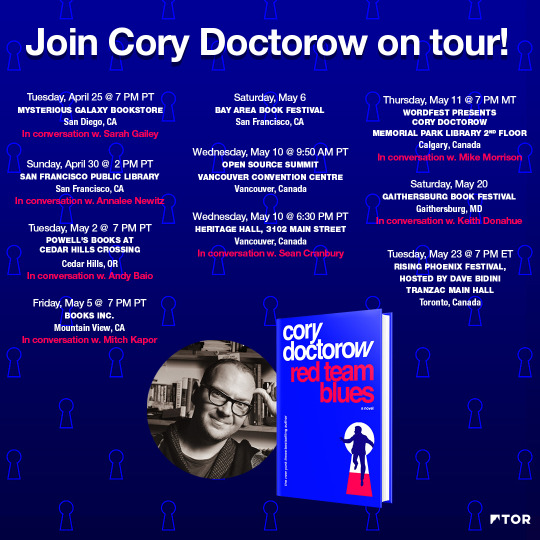
Catch me on tour with Red Team Blues in Burbank, Mountain View, Berkeley, San Francisco, Portland, Vancouver, Calgary, Toronto, DC, Gaithersburg, Oxford, Hay, Manchester, Nottingham, London, and Berlin!

[Image ID: An industrial meat grinder, fed by a conveyor belt. A dead, elderly man is traveling up the conveyor, headed for the grinder's intake. The grinder is labelled 'HOSPICE' in drippy Hallowe'en lettering. It sits in a spreading pool of blood.]

Image:
Seydelmann (modified)
https://commons.wikimedia.org/wiki/File:GW300_1.jpghttps://commons.wikimedia.org/wiki/File:GW300_1.jpg
CC BY-SA 3.0
https://creativecommons.org/licenses/by-sa/3.0/deed.en
#pluralistic#cepr#medicare advantage#medicare#hospice#aca#aging#death panels#fraud#california#preying on the dying
141 notes
·
View notes
Text
Butcherbird
Maybe it would've been right
To take you to the vets office
To take you and pass you to a stranger
To take you home with me to heal
To take your life and place it under the jaws of a dog
To take you between my palms and killed you myself
To take my time with you
To find you some way to end the pain
But I figured in my hazy judgement
That you wanted not to die someplace strange
That you needed as few hands placed upon you as possible
That you wanted to be far from predators
That you needed to recover or die on your own terms
That you wanted me to be gentle
That you needed me to act quickly
That you deserved dignity
That is why I simply took you from the gutter and placed you on the grass
I'm sorry you were stuck with someone without the knowledge to help
I'm sorry you were stuck, wet and cold against the stones
I'm sorry I had my dog with me
I'm sorry I didn't know if you would make it or not
I'm sorry I am only a person
I'm sorry you are only a butcherbird
I am sorry that in the moment we shared, we couldn't speak to each other.
You looked at me strange when I turned and left. I couldn't tell whether I helped your or hurt you.
I hope the earth is dry
I hope the grass is soft
I hope there are bugs for you to eat
I hope the sun rises to warm you tomorrow
I hope you make it
I hope you die peacefully
I hope you forgive me for projecting my feelings onto you.
7 notes
·
View notes
Text
I finally got the patients assigned to me for the hospice unit I’m volunteering for, it involves writing as a pen pal to help add some sense of happiness and stuff and I cannot share much because of HIPAA, but this one patient I have (who was born in 1933!!) is breaking me already because of the notes and about how they are saddened because of their circumstances and I am not ready to receive the final update from the care team coordinator at all oh boy
So far I have three assigned patients and I am going to receive updates about how they’re doing (including when they’re dead) and I just genuinely hope that the family members read the letters I write and know that someone who they won’t ever meet cares about their loved one and that it’s not just their medical team who cares
Ouch ouch ouch
#personal#hospice#cw death mention#I am going to be told when they die#absolutely painful even though I will never ever meet these people#I really can’t say much so they/them is used no matter what and I won’t ever share names#I wish I could volunteer irl but I’m too sick and disabled for that#plus I don’t have a drivers license or car so
13 notes
·
View notes
Text
Kindly lend a hand to ensure my home remains a safe haven for me and my beloved furry companions!
18 notes
·
View notes
Text

297: Please, no, I want to get off this thing.
Image description: a three panel comic with polaroid frames. The panel shows an installment in an amusementpark in bright yellow and red, it might be the corner of a rollercoaster. the text on the panel reads: “ Have you ever been on a rollercoaster and thought to yourself; "Please, no, I want to get off!" and it never stopped? It's the same with grief.” Text underneath reads: “J. krupitza / inspired by asofterworld.com” end Image description
#rollercoaster#grief#death#microfiction#photography#polaroid#diary of a dissembler#diaryofadissembler#story#a softer world fancomic#a softer world#hospice#cancer#image description#loss
15 notes
·
View notes